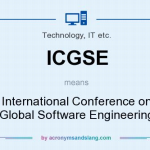In part 1 of this article, we explored the first 5 of the top 10 risks, including:
- Offshore work can be difficult to measure or quantify, leading to lack of confidence in the offshore effort
- Lack of visibility into day-to-day work
- Lack of a competent lead/point-of-contact
- Lack of contingency plans for downtime
- Offshore teams lose access to onshore servers and applications
The second 5 risks are based on the communication and cultural problems that exist between distributed teams, as well as the business climate in popular offshoring locations.
6) Offshore team did not tell me the truth––surprise!
We have worked with many companies where the offshore teams (usually a vendor, but sometimes a captive team) have not been honest with the onshore teams about the status of projects, amount of testing completed, and the functionality of Test Automation created by the offshore team.
In any offshore testing engagement it is a must to have a single Test Lead/Test Manager onshore that is accountable for reviewing and reporting the work of the offshore team on a periodic basis. This person may delegate some of the review responsibility to other members of the team, but at the end of the day, they are responsible for the quality of the work coming from the offshore team.
7) Attrition, or team members are distracted or reassigned to another project
With the booming economies in locations such as India, Russia, or China, engineers are frequently leaving companies in search of better, higher paying opportunities. Onshore teams need to recognize this risk, and be prepared to quickly train new members of the offshore team.
There are some steps which can be taken at the business level to help reduce the attrition within the offshore team. If your offshore team is captive, then management should be prepared to offer increasing compensation packages to the offshore team members, in recognition of the market salaries. It is more difficult when you are working with an offshore vendor, but management can creatively structure the agreements with the vendor to allow for flexibility and retention of the key offshore team members.
Having key team members be reassigned to other projects is an especially large problem when working with offshore vendors. As the vendor’s business grows (most are experiencing rapid expansion), they need to continually move experienced staff into new leadership roles. The result? The vendor may decide to move key members of the offshore team to other projects at critical times in your project.
This risk can be mitigated through either contractual or informal agreements (depending on the relationship with the vendor) to not change project personnel for a certain period of time, such as the length of the next project. A mutual agreement should be reachable, before work begins, which respects the growth needs of the offshore vendor as well as the stability needs of your project.
8) Personality, communication, and culture conflict/clash between onshore and offshore teams:
Personality conflicts can occur within any team, but they can be especially bad if
- There are teammates who see the world through a different ‘lens’ due to their cultures,
- Teammates do not have any face-to-face interaction,
- Teammates feel there is unequal or unfair distribution of tasks, or
- There is animosity due to the nature of offshoring.
There are a number of things which can be done to reduce the risk of these conflicts. Some of the most common include cultural training, where teams learn about the business and social cultures of their remote teammates. Another is to have some onshore teammates visit the offshore location for several weeks, or vice versa. We have found that this ‘immersion’ experience is not only valuable for knowledge transfer, but also helps teammates ‘put a face to the name’ and establish some bonds with the remote team members. Any type of collegial personal interaction or relationship between onshore and offshore teams goes a very long way in diffusing potential tension.
It is also important to always treat teams fairly in work distribution. For example, repetitive, uncreative test execution sent offshore will lead to lost staff then a need for new staff training. Keeping that same repetitive, uncreative test execution onshore may lead to hard feeling by your local team. Look for ways to spread out both the fun and boring tasks!
9) Offshore team did not listen vs. Onshore team did not listen:
This is yet another example of a problem that can occur in any team, but which is exacerbated by the barriers between distributed teams. Often times, the inability for the team members to effectively communicate with each other (due to cultural, language, and other barriers) can result in frustration and a belief that people just aren’t listening.
The best way to prevent or mitigate this is by establishing leads in all locations who can effectively communicate to other team leaders, as well as their own team. If any of the team members are having communication problems, they must be able to escalate the issue with their team leader.
Also, many people are over-tasked now. Listening takes time and patience. These may be in short supply for you. The problem is that communication problems are the number one cause of work production problems and when communication breaks down, trust breaks down. They are hard to rebuild. Invest the time is listening.
10) Language barrier (writing/speaking problems) gets in the way of the work or productivity:
In our experience, we have yet to encounter an offshore team that did not have the necessary technical skills to succeed at a project; the breakdowns in projects have usually occurred due to communication problems.
This is a difficult challenge which takes time to improve. If your organization has a captive team, it is highly recommended that you offer an ongoing English and technical communication class. Not only does this help with current projects, but it can also be a great communication tool. For the onshore team, leverage any natives of the offshore country if you can. Even though all communication should be in English, the cultural understanding that these team members provide can be helpful to other members of the onshore team.



















